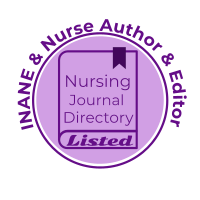Pediatric Emergency Resident – Nurse Teaching: a Survey of an Innovative Method
DOI:
https://doi.org/10.29173/cjen180Keywords:
Education, Innovation, Nursing, TriageAbstract
Background: Triage is one of the most important steps in the emergency department (ED), as it helps to recognize the urgency among patients. A proper triage system identifies the most critical patients regardless of the time of presentation. Triage nurses rarely can follow up on their triaged patients to verify the accuracy of their decision.
Methods: A teaching session on male genitalia triage by a Pediatric Emergency Medicine (PEM) resident was given to triage nurses and a survey was sent afterwards to all participants to evaluate the confidence in their triage accuracy before and after the session.
Results: The results showed a statistically significant increase in the confidence of nurses in avoiding both undertriage and overtriage accuracy. Also, all the nurses recommended attending similar talks given by a PEM resident. This study has helped in ameliorating interprofessional relationship between the nurses and residents especially with the increased use of masks. However, the number of nurses is too small to be representative and a bigger quality improvement study is needed.
Conclusion: PEM resident-nurses teaching is an innovative method to improve the accuracy and quality of triage and to help establish good interpersonal relationship skills in the pediatric ED. More studies are needed in the future to validate this technique so that it can be implemented for all presentations.
References
Foronda, C. L., Alhusen, J., Budhathoki, C., Lamb, M., Tinsley, K., MacWilliams, B., et al. (2015). A mixed-methods, international, multisite study to develop and validate a measure of nurse-to-physician communication in simulation. Nurs Educ Perspect., 36(6), 383-8.
Lei, C., & Palm, K. (2021). Crisis resource management training in medical simulation. StatPearls.
Peng, J., &Xiang, H. (2016). Trauma undertriage and overtriage rates: Are we using the wrong formulas? Am J Emerg Med., 34(11), 2191-2.
World Health Organization (2008). Manual for the Health Care of Children in Humanitarian Emergencies. WHO Guidelines Approved by the Guidelines Review Committee.
Downloads
Published
How to Cite
Issue
Section
License
Copyright (c) 2022 Chady El Tawil, Daniel Brody

This work is licensed under a Creative Commons Attribution 4.0 International License.
The Canadian Journal of Emergency Nursing is published Open Access under a Creative Commons CC-BY 4.0 license. Authors retain full copyright.




